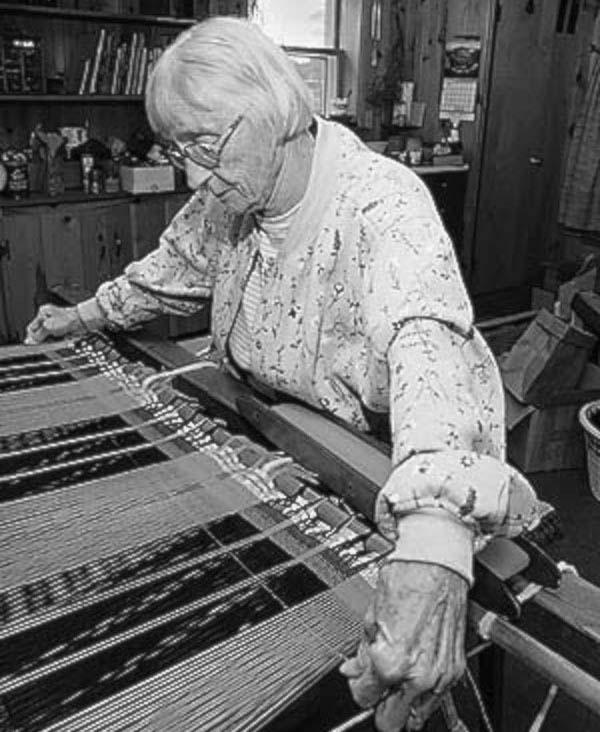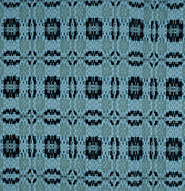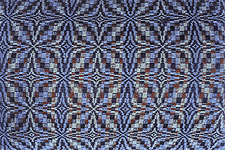Dorothy Thompson

Photo by Michael Keller
Bio
During the Great Depression in the 1930s, Eleanor Roosevelt became interested in West Virginia's community housing projects known as Homestead Projects. A part of these efforts was aimed at building the local people's economic self-sufficiency, and the First Lady helped set up apprenticeships in time-honored Appalachian crafts to improve marketable skills. Dorothy Thompson was a young woman when she caught the attention of Mrs. Roosevelt. The American-born daughter of Czech and Slovak immigrants, she first learned to weave at age 10 from her mother and then studied weaving through vocational education classes, studying three hours a day for two years. Her father, who labored as a woodworker in Quaker-run community projects in northern West Virginia, also built looms for sale to local weavers. Young Dorothy was ready for an advanced apprenticeship, and she was sent to Kentucky to study for a year-and-a-half with master weaver Lou Tate, until World War II broke out.
Later, Dorothy married Ben Thompson, whose great grandmother was a weaver and a spinner. Thompson's Vermont relatives gave Dorothy his great grandmother's large, barn frame, four-harness loom, one that Mrs. Thompson uses to this day, as well as a generations-old spinning wheel. In the 1960s, a Johnson Administration program that supported adult education allowed her to set up a weaving program for others in her community. Even as the program was discontinued, she kept teaching others every step in weaving, from winding a warp, to preparing the loom, to weaving techniques, to special finishing techniques like fancy knotting and plain stitchery accents. She has taught at the August Heritage Center in Elkins, taken on apprentices on her own and through the West Virginia apprenticeship program, and demonstrated regularly at the Mountain State Forest Festival. Countless aspiring weavers have come to her for instruction. Marion Harless, President of the Mountain Weaver's Guild that grew out of a shop originally established by Mrs. Roosevelt, says "Her students love her although she is an exceedingly tough taskmaster." Ms. Thompson feels that this reputation comes from the high technical and creative standards that she expects of her students. Once when asked by a novice how long it takes to learn to weave, Mrs. Thompson answered "Five minutes. . . . But it doesn't stop there. You have to learn to set up the loom, buy the material, and all of that." To be a master weaver, "you have to weave all your life."

|

|
Dorothy Thompson creates a wide range of woven products, from functional tote bags and rugs, to double-woven coverlets and tablecloths, to intricate afghans and stoles, to many smaller items. She possesses a keen analytical eye and can quickly spot the minute errors in her students' warps gone wrong. She is steeped in tradition, while at the same time being an adventurous creative artist. Says Harless, "In addition to being the owner of outstanding observational skills and memory that permit the almost instantaneous analyses of weaving structure and the rattling off of overshot pattern names and alternatives, Dorothy is still a great experimenter and learner."

